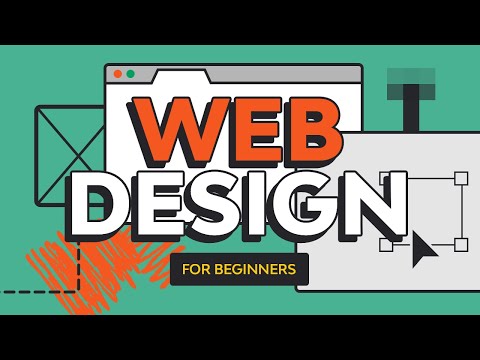Top Patterns in Web Design You Need to Know for 2024
Wiki Article
A Comprehensive Overview to Crafting Aesthetically Appealing and Functionally Durable Internet Style Solutions
A comprehensive understanding of foundational design concepts, along with a keen focus on customer experience, can substantially boost the effectiveness of web remedies. By leveraging aspects such as shade theory and receptive formats, developers are outfitted to develop not only visually pleasing user interfaces yet additionally ones that cultivate customer engagement.Comprehending Layout Principles
Comprehending style concepts is fundamental to producing efficient internet services that involve customers and connect messages clearly. These concepts offer as the structure for any successful style task, leading the aesthetic and functional aspects of a site. Secret layout concepts consist of equilibrium, comparison, placement, rep, and closeness, each playing an important function in developing a cohesive and visually pleasing design.Equilibrium includes distributing visual weight evenly across a page, making certain that no solitary component bewilders the others. Contrast enhances readability and draws focus to crucial attributes, enabling individuals to navigate the content easily. Placement produces order and organization, leading the viewer's eye in a sensible circulation. Repetition enhances a regular visual language, strengthening brand name identification and enhancing user knowledge with the user interface. Closeness groups related components, assisting customers quickly recognize connections in between various pieces of material.
Importance of Customer Experience
Customer experience (UX) is critical in website design, as it directly affects exactly how visitors interact with a website and view its value. A properly designed web site not just draws in individuals but likewise maintains them involved, eventually causing higher conversion rates and consumer contentment. UX incorporates different elements, including use, access, and the total visual charm of the site.
Additionally, positive individual experiences foster brand commitment and encourage repeat sees. Ultimately, focusing on user experience in internet design is crucial for producing useful, appealing, and effective sites that fulfill the demands of modern individuals.
Shade Theory in Internet Design
Shade concept plays a critical duty in web design, influencing not just the aesthetic charm of a website but additionally the emotional reactions of its customers. Recognizing color dynamics is crucial for creating an efficient customer experience. Colors can evoke certain sensations; for example, blue often conveys depend on and professionalism, while red can impart exhilaration or necessity.When selecting a color combination, developers need to consider harmony and contrast. Complementary shades can Find Out More develop vibrancy, while similar colors supply a more tranquil feeling. Making use of devices like shade wheels can assist in identifying effective color combinations. Availability needs to be focused on; making sure adequate contrast between text and background shades is essential for readability.
In addition, social context plays a considerable role in color analysis. While white signifies pureness in Western societies, it may stand for grieving in some Eastern societies. A detailed understanding of the top article audience is crucial when using color concept.
Integrating color psychology right into web design not just enhances visual allure however additionally influences customer behavior, assisting them towards desired activities. Eventually, a well-balanced shade technique can significantly elevate the total impact of an internet site.
Responsive and Flexible Designs
In addition to shade concept, the structure and design of an internet site substantially impact customer experience and engagement. web design. Responsive and flexible designs are essential approaches for guaranteeing that internet sites operate successfully throughout a wide range of tools and screen sizesReceptive layout employs liquid grids and adaptable pictures, permitting the layout to change flawlessly according to the viewport dimensions. This method makes certain a consistent individual experience, as material reflows and resizes, keeping ease of access whether watched on a smartphone, tablet, or desktop. Media queries play a crucial duty in responsive layout by applying different styles based on the gadget's features.

Both methods aim to enhance user experience by focusing on functionality and ease of access. Choosing between receptive and adaptive layouts largely relies on job requirements, target market, and preferred user interactions, inevitably adding to the effectiveness of website design services.
Testing and Optimization Strategies
Evaluating and optimization techniques are essential elements of effective internet style, ensuring that internet sites not only fulfill individual expectations however also execute effectively throughout different systems. These approaches incorporate a variety of techniques aimed at evaluating functionality, functionality, and general performance.A/B testing is a fundamental technique, permitting designers to contrast 2 versions of a website to determine which does better in terms of user interaction and conversion rates. Individual screening is equally crucial; it entails gathering comments from genuine customers to identify discomfort factors and areas for enhancement. This qualitative information can guide design modifications that boost user experience.
Furthermore, efficiency optimization methods such as photo compression, code minification, and leveraging internet browser caching can significantly improve load times and responsiveness. Tools like Google PageSpeed Insights and GTmetrix offer important metrics for examining internet site efficiency, making it possible for developers to make data-driven choices.
Verdict
To conclude, the my review here integration of fundamental design concepts, user-centered strategies, and strenuous screening techniques is essential for creating reliable internet layout remedies. By focusing on balance, contrast, alignment, and shade concept, developers can improve visual appeal while ensuring functionality. Receptive designs add to a seamless user experience across devices, further advertising involvement. Ultimately, the application of these techniques not just boosts customer satisfaction yet also drives conversion prices, solidifying the relevance of a detailed layout structure.Report this wiki page